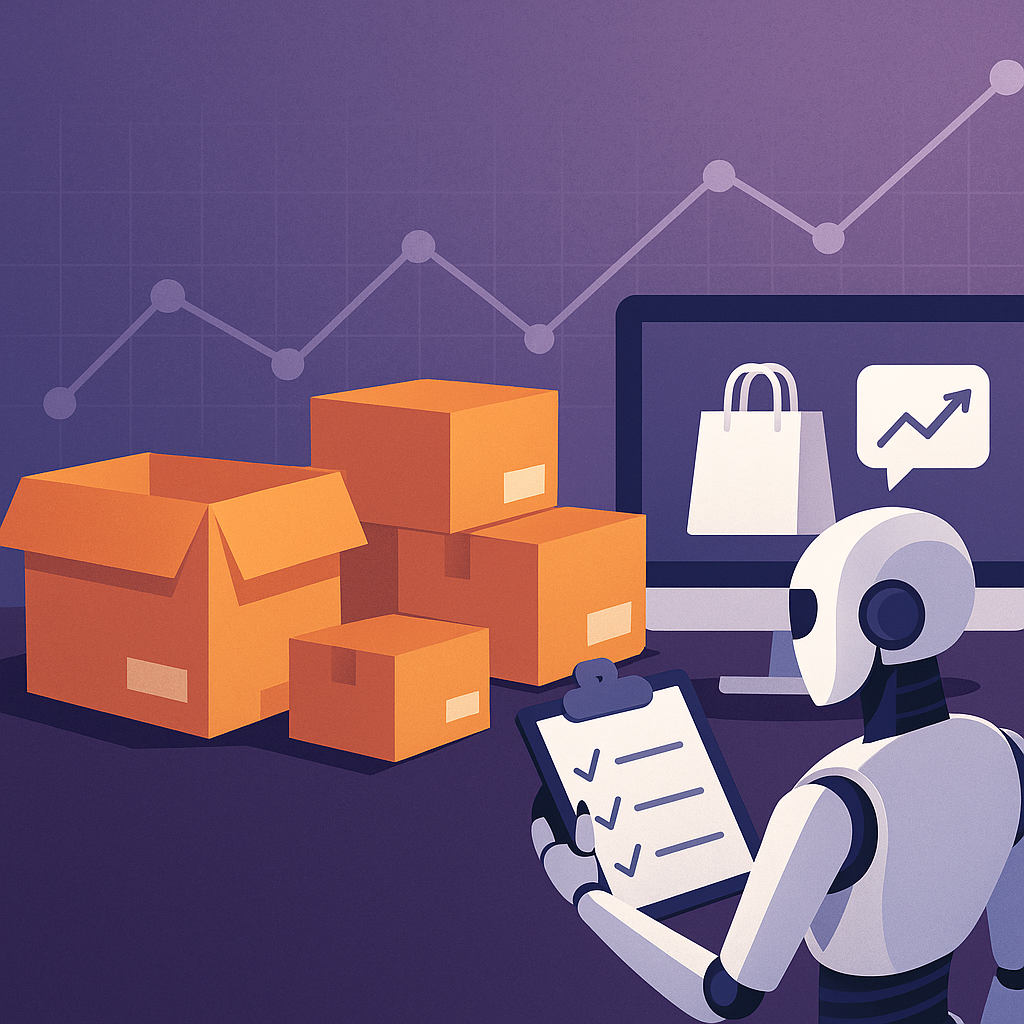Impact of Personal AI Agents on Inventory Management and Demand Forecasting
As AI shopping agents introduce faster, more dynamic purchasing patterns, e-commerce businesses must modernize inventory management and demand forecasting to remain responsive and competitive.

The purchasing patterns of personal AI shopping agents have the potential to significantly influence inventory management and demand forecasting for e-commerce businesses. These agents can introduce new dynamics, potentially leading to less predictable purchasing behavior or rapid shifts in demand for specific products. Businesses need to explore how to adjust their inventory management strategies and demand forecasting models to account for this emerging customer segment.
Traditional inventory management and demand forecasting rely on historical human purchasing data, seasonal trends, marketing campaigns, and market analysis. AI is already used in these areas to improve accuracy. However, the introduction of autonomous AI agents adds complexity.
Potential impacts of personal AI agents on inventory and demand:
Increased Speed of Purchase:
AI agents can identify products and complete transactions much faster than humans. This could lead to quicker depletion of stock, requiring faster inventory turnover.
Volatile Demand:
If many AI agents are programmed with similar objectives (e.g., finding the lowest price), demand for heavily discounted products could surge rapidly. Conversely, if agents quickly shift focus based on new instructions or market changes, demand could drop just as quickly. This introduces a potential for unpredictability.
Focus on Specific Attributes:
AI agents are often programmed to find products with precise specifications or attributes. This could lead to highly focused demand on specific product variations or items with particular features.
Automated Stockouts:
If a business's systems aren't optimized for AI agents, it could lead to compatibility issues that cause agents to leave the site. While this avoids a purchase, it also means missed sales opportunities and potentially distorted data if agent visits aren't properly tracked.
Adapting inventory management and demand forecasting for the age of AI agents involves:
Enhanced Data Collection and Analysis:
Expanding data collection to specifically track AI agent traffic and purchasing behavior, in addition to human data. AI-driven analytics are needed to understand the patterns (or lack thereof) in agent-initiated demand. AI can help process and analyze vast streams of customer data, including purchasing history.
More Dynamic Forecasting Models:
Incorporating AI agent behavior as a variable in demand forecasting models. These models may need to be more dynamic and capable of real-time adjustments based on observed agent activity across the market. AI can help improve accuracy and efficiency in forecasting.
Faster Inventory Replenishment:
The potential for faster demand could require optimizing supply chain logistics for quicker inventory replenishment.
Real-Time Inventory Monitoring:
Implementing systems that provide real-time visibility into inventory levels, potentially using AI-powered smart inventory management systems. This allows for quicker responses to sudden changes in demand driven by agents.
Anticipating Agent Strategies:
While challenging, trying to anticipate common programming strategies for personal AI shopping agents (e.g., price sensitivity, focus on specific product categories) could help in forecasting demand for certain types of products.
The rise of AI agents means that inventory and demand forecasting must become more agile and data-driven. Businesses need to leverage AI internally to analyze complex data streams and adapt their operational strategies to manage potential volatility and capitalize on the opportunities presented by this new customer segment.